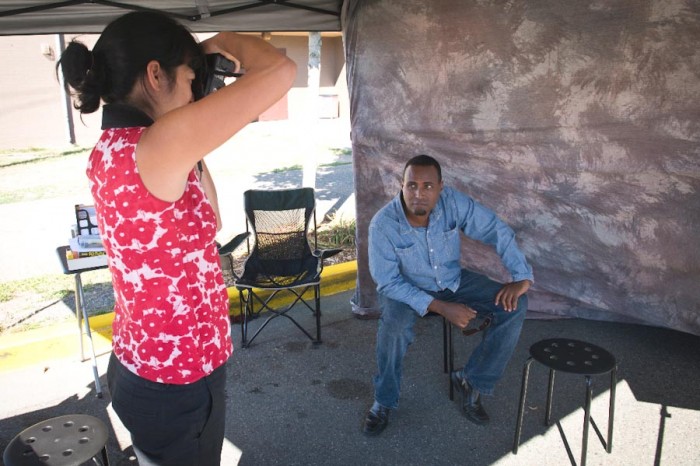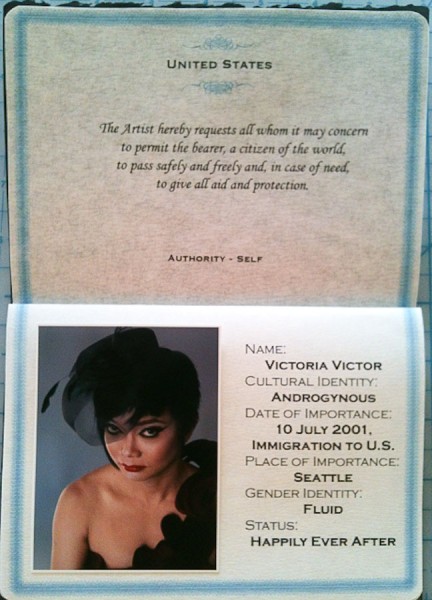
“You all can go, but he has to stay,” the TSA agent announced. I glanced back at the group of antsy teens clustered behind me then over to the roped off section where they had taken my last kid. I was grateful to still be able to see him, but terrified because he was on the wrong side of the rope, the side where people were sent to wait for additional screening.
“Actually I can’t go sir,” I explained to the agent, careful of my every inflection. There are times for righteous anger and neck rolling and there are times for bitter diplomacy, the kind where you must taste your words carefully to make sure each one is sweet, courteous, and subservient.
“He’s a minor and he’s in my care. We’re all a part of the same study abroad program.”
I motioned to my group and wished I were wearing a uniform — anything that would make me look more the part of the responsible adult.
In my mind I wondered what he saw when he looked at me, a young black woman surrounded by kids with backpacks. I wondered what he saw when he looked at my student. Did he see the tough city kid who had never been outside of New York before, and cried from homesickness his first night in Japan? Or did he just see brown skin and the wrong kind of passport?
“You can go,” he repeated, impatient to keep his line moving. Here we were finally stateside our amazing journey complete, but our homecoming would be delayed because unlike the rest of his group, one of my students wasn’t carrying a U.S. passport.
The TSA agent and I went back and forth a few more times, but he wouldn’t budge. Neither would I.
“I’m not leaving,” I informed him, trying to stay calm. By now the crowd behind us was getting restless and the other kids, though sympathetic, had started to mumble about missing their connecting flights.
This wasn’t the first time I’d had issues at the airport. As a study abroad leader I have been around the world and been frisked in every city, including an intimate behind the curtain experience that makes me never want to go back to Morocco.
When I was 16, my mother and I were detained for four hours in Paris while a French TSA agent alternated between yelling at me for not looking like the “fat girl” in my passport photo and for being an American and expecting the special treatment of…I don’t know, human dignity.
On one of my trips back from Guatemala, I stood there with a group of forty kids as the TSA agent removed every single item from my backpack searching for contraband that wasn’t there.
“It’s just a random search,” they told me. But it stops seeming random when it happens every time. It’s especially humiliating to be presumed a criminal in front of the youth I had been tasked with leading.
That day in L.A. was the first time I had ever been separated from one of my participants in an airport, and it was the worst hour of our trip, trouble shooting connecting flights for kids who were traveling back to cities around the States and trying to stay calm and positive, when really I just wanted to scream “this is bullshit.”
We had traveled thousands of miles to see the world and to expand as leaders only to be brutally reminded that it’s not always about how you see the world, but how the world sees you that makes the biggest impact on your life.
This experience came back to me last Saturday when, while wandering from booth to booth at the fourth annual Art Walk in Rainier Beach, I stumbled across Carina A. del Rosario’s Passport Series. Having just returned from a trip to Veracruz where I will be launching a study abroad for young writers of color, I had this perfect moment of ‘YES.’ Looking at the pictures and reading through profiles of people defining themselves in their own terms felt like the antithesis of all my TSA drama.

“I started my Passport Series Project after I started working with transgender folks on another documentary project,” explained photographer and activist del Rosario. “I learned from them that a lot of them had official documents that didn’t match how they presented and that would cause a lot of problems like when they would go to the doctor’s office or apply for a job.”
It made me think of all the ways I’ve been pressured to change the way I present myself to be more palatable or to fit into someone else’s idea of who I am supposed to be. Beyond the transgender community, many people of color, immigrants and refugees have similar difficulties navigating living between the identities they choose for themselves and the ones that are superimposed upon them.
“We face the same types of discomforts, frustrations, or fears when we fill out official documents. So I created the passport series by revising some of the common questions asked on these official documentations and instead of being forced to check boxes like race or gender or employment status I invite people to use their own words to these new categories.”
After chatting briefly, I sat down to fill out the questionnaire. Instead of race it asked me to define my cultural identity, instead of my date of birth it asked me to identify a date or dates of importance to me.
“I wanted to give people the opportunity to capture that,” explained del Rosario. “I was just talking to somebody earlier and he was saying that for his cousin who had battled addiction that the important date for him was the day that he became sober. For other folks it’s when they came out as queer. These are all just experiences that make us much more complex than the boxes that we’re offered.”
After I completed the form and signed a release, del Rosario took my picture, marking for me a very important date, a day when I was given the opportunity to define myself in my own words, to give a voice to who I am in the world.
Del Rosario was recently awarded a grant that will ensure that people throughout Seattle will have the opportunity to participate in and view this project. The series is set to be exhibited downtown this fall at a new gallery space that’s being created by the Mayor’s Office.
To find out more about del Rosario’s work, check out her website.

